Imagine this: You have just arrived in the beautiful Peruvian Andes, which is filled with majestic mountains, mysterious ruins, and vibrant cultures.
The scale of Peru’s high-altitude sites actually takes your breath away as you make your journey up to the dizzying heights of Machu Picchu or the breathtaking beauty of Cusco. A dangerous threat for the reckless traveler, altitude sickness may quickly transform your journey into a nightmare.
This blog dives into all you need to know about altitude sickness in Peru, providing insightful information and practical advice to make your trip to Peru’s high regions a breath of fresh air in every way.
Related read: How to Structure Your Peru Itinerary
Here is an overview:
- What is Altitude Sickness?
- Travel Destinations in Peru Prone to Altitude Sickness
- Here are Several Places in Peru Where Altitude Sickness is a Potential Issue
- What are the Symptoms of Altitude Sickness?
- The Following are Some Classic Signs of Altitude Sickness
- Avoiding Altitude Sickness
- Take the Right Medicine
- Drink Coca Tea or Chew Coca Leaves
- Adapt to the Altitude Gradually
- Eat Low-Fat Dishes and Avoid Fatty Meals
- Other Tips to Avoid Altitude Sickness
- Acute Mountain Sickness (AMS) and Chronic Mountain Sickness (CMS)
- Chronic Mountain Sickness (CMS)
- Personal Experience with Altitude Sickness
- Navigating Altitude Sickness in Peru
- 4 Days: Best of Cusco
- Key Benefits of this Tour Option
- Cusco Itinerary
- Day 1: Sacred Valley – Immerse Yourself in an Authentic Tour of the Valley’s Must-See Ruins
- Day 2: Machu Picchu – Discover this Wonder of the World with our Knowledgeable Guide
- Day 3: Rainbow Mountain – Experience Vinicunca Without the Crowds
- Day 4: Lake Humantay – Enjoy the Turquoise Lake Before the Big Groups Arrive
What is Altitude Sickness?
Travelers who travel to high altitudes, such as Cusco, Arequipa, Colca Canyon or Puno, where the air pressure and oxygen levels are much lower, may experience altitude sickness, commonly known as acute mountain sickness (AMS).
Your body gets less oxygen at high altitudes, which can cause a variety of symptoms, from minor discomfort to serious disease. Although not everyone is at risk, it’s critical to understand the medical effects of altitude sickness because severe cases can be dangerous.
The majority of travelers in Peru who get altitude sickness are those who arrive by plane from a location with greater temperatures and lower altitude. The sudden changes in altitude and temperature, where the air is thinner, and it is colder, are responsible for this.
Travel Destinations in Peru Prone to Altitude Sickness
The diverse landscape of Peru varies in altitude from coastal deserts to high mountain summits. It might be enjoyable to travel to the country’s high-altitude regions, but it’s crucial to be aware of where altitude sickness is more likely to happen.
Here are Several Places in Peru Where Altitude Sickness is a Potential Issue
- Cusco: You can reach Machu Picchu and the Sacred Valley from Cusco, which is located around 11,000 ft. (3,400 m) above sea level. Spend a day or two in Cusco before beginning hikes or treks to higher altitudes to allow for acclimatization.
- Machu Picchu: While the Inca citadel is only about 7,970 ft (2,430 m) high, many of the hikes and trails that go there have high-altitude aspects. If you want to explore this natural treasure, a gradual ascent and acclimatization are crucial.
- Arequipa: Also known as the “White City,” Arequipa sits at a height of around 7,660 ft. (2,335 m). Spend a few days adjusting to the altitude before touring the city or starting treks to the Colca Canyon.
- Lake Titicaca: At elevations of up to 12,500 ft. (3,810 m), Lake Titicaca is the highest navigable lake in the world. Be cautious of the altitude when visiting the Uros islands or other places nearby. The greatest strategy for making the trip across the crystal-clear waters is still rising slowly.
Related read: Where to go in Peru Besides Machu Picchu
What are the Symptoms of Altitude Sickness?
The majority of travelers typically experience symptoms of altitude sickness 6 to 24 hours after ascending over 9,842 ft. (3000 m). The reduced air pressure and oxygen levels can cause a range of symptoms.
The Following are Some Classic Signs of Altitude Sickness
- Headaches
- Nauseous and dizzy feeling
- Tiredness
- Sleeping difficulties
- Respiratory issues
- Loss of appetite
Altitude sickness often lasts between two and three days. This is typical, given that it takes a traveler in Peru about two days to acclimate. However, there is always a way around a problem. In this situation, careful planning is essential.
There are some recommendations to prevent altitude sickness. These tips come from travelers who have visited Peru before and from those who live in the Peruvian highlands.
Avoiding Altitude Sickness
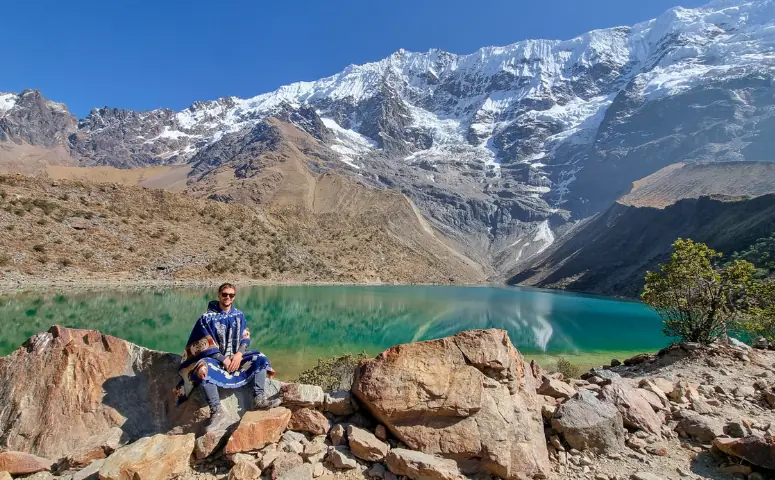
Your high-altitude experiences in Peru don’t have to be impaired by altitude sickness. You can reduce risk and completely enjoy the Andes’ beauty with careful planning and wise decisions.
Below are some essential methods to guarantee a risk-free and joyful trip.
Take the Right Medicine
The following are some of the most popular medications used to prevent and cure altitude sickness and associated symptoms:
- Altitude sickness pills (e.g., Sorojchi pills, available in Peruvian pharmacies)
- Acetazolamide, branded as “Diamox,” is used to both prevent and cure high altitude sickness.
- Paracetamol with Ibuprofen for Headaches
- Gravol or Promethazine to relieve nausea.
Every pharmacy sells medications, and the staff at your hotel or hostel will also be able to assist you.
To prevent altitude sickness, you should take Diamox or Sorojchi pills 1-2 days prior to ascending to higher altitudes. You should still exercise caution and increase your altitude gradually rather than quickly.
Drink Coca Tea or Chew Coca Leaves
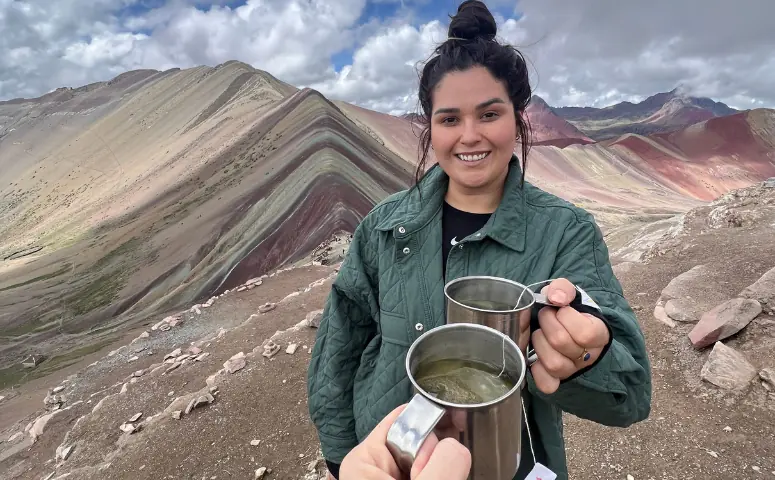
In the mountains of Peru, mate de coca, or coca tea, is the most often consumed beverage. You can easily prepare coca tea yourself. Just add some coca leaves to hot water, wait a few minutes, then, if needed, add some sweetness.
Important: If you must submit to a drug test for your job, stay away from coca tea. Even if the leaves only contain a tiny amount of cocaine, a drug test could still come out positive.
Chewing coca leaves is quite popular among others. They claim it helps them focus better and is a part of their culture. We’ve done it on a number of walks, including the 5-day Salkantay Trek to Machu Picchu and the Rainbow Mountain Vinicunca trip, and it certainly helped us.
Additionally, every tourist shop sells coca leaves in the form of cookies or other treats. They are the ideal “on-the-go” snack.
Adapt to the Altitude Gradually
Normally, it takes your body a few days to adjust to the increased altitude. You should need two to three days to get used to it because of this.
The Sacred Valley and Machu Picchu should be seen first after arriving in Cusco because they are located at lower altitudes. After that, you can go on hiking excursions, such as to Humantay Lake or the Rainbow Mountains.
Generally, you should avoid ascending higher than 984–1,640 ft. (300–500 m) every day and take a day off every 1,968–2,952 ft. (600–900 m), or every 3–4 days.
This Best of Cusco in 4 Days Tour provides all of that in one tour. Find more details at the bottom of the article.
Eat Low-Fat Dishes and Avoid Fatty Meals
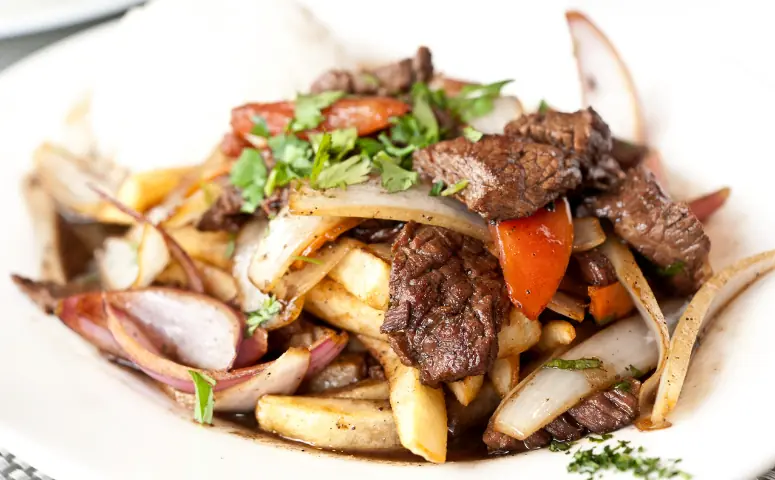
Great low-fat foods include soups, rice, pasta, potatoes, bread, fruit, and poultry, which provide your body with the energy it requires. A high-carb diet has been proven to improve mood and is a smart method to prevent altitude sickness. However, vary it up and add lean protein, such as chicken, and some healthy fats, such as avocado or almonds.
Because they take less oxygen for your metabolism than fat and protein do, carbohydrates are excellent for you.
Avoid eating anything creamy or salty because these foods take longer for your body to digest. For instance, eating salty food will make you lose water from your body more quickly.
Due to the altitude, many travelers experience a lack of appetite after arriving. They eat up to 40% less calories than usual as a result. Therefore, even if you don’t feel hungry, it’s crucial that you eat enough food when you get to your destination.
Other Tips to Avoid Altitude Sickness
Here are some other tips that you should follow to avoid the altitude sickness in Peru:
- Drink a lot of water: Add 1.5 l to your daily usage, as keeping your body hydrated is very important.
- Avoid alcohol and don’t do strenuous activities: It’s recommended to avoid alcohol, smoking, and engaging in strenuous physical activity in the first 24 – 48 hours.
- Get Agua de Florida: It’s a tiny bottle of herbal-infused yellow perfume. This one helps in case you are experiencing difficulty with altitude, headaches, or breathing issues. Inhaling it is considered to be helpful.
- Buy Oxishot: A small dischargeable called Oxishot has up to 8 l of oxygen in it. It reduces your headaches, weariness, and breathing difficulties.
Acute Mountain Sickness (AMS) and Chronic Mountain Sickness (CMS)
Acute Mountain Sickness (AMS) and Chronic Mountain Sickness (CMS) are different manifestations of illness that can occur with exposure to high altitude.
Acute mountain sickness is immediate and usually occurs within a few hours of ascending to altitudes above 2,500 metres (about 8,000 feet). The symptoms are described above.
On the other hand, chronic mountain sickness, also known as Monge’s disease, is a long-term illness that develops over years of living at high altitudes. It’s characterized by an overproduction of red blood cells in response to the prolonged lack of oxygen associated with living at high altitudes. This results in a condition known as polycythemia, which thickens the blood and can lead to pulmonary hypertension, heart failure and other serious complications.
Chronic Mountain Sickness (CMS)
Chronic Mountain Sickness (CMS), or Monge’s disease, is the body’s adaptive response to long-term exposure to high altitude. The key physiological response in CMS is a condition called polycythemia, where the body overproduces red blood cells in an attempt to carry more oxygen to the tissues.
While this may seem beneficial, it increases the viscosity (thickness) of the blood, making it harder for the heart to pump blood throughout the body.
Over time, this increased workload on the heart can lead to serious complications, such as:
- Right-sided heart failure: The right side of the heart, which is responsible for pumping blood to the lungs for oxygen, can become enlarged and weakened over time due to the increased pressure required to push blood through the lungs.
- Pulmonary hypertension: Increased blood viscosity can lead to high blood pressure in the lungs’ arteries, affecting normal breathing.
- Stroke: Thicker, slower-moving blood increases the risk of blood clots, which can cause a stroke if a clot blocks an artery in the brain.
- Abnormal bleeding: Although rare, some patients with chronic mountain sickness may experience abnormal bleeding due to changes in blood clotting mechanisms.
As CMS affects multiple organ systems, patients may also experience non-specific symptoms such as fatigue, dizziness and reduced physical endurance. As CMS progresses, patients may develop cyanosis (blue or purple coloring of the skin) due to poor oxygen delivery to the body’s tissues.
It’s important to note that CMS is an adverse reaction to high altitude and is not experienced by everyone who lives in such conditions. Some populations are genetically adapted to living at high altitudes and do not develop CMS. Medical intervention, including targeted medication and advice on lifestyle changes, can help those who are adversely affected.
Personal Experience with Altitude Sickness
Each year, we spend a large amount of our time in high-altitude locations, such as Puno, Cusco, Arequipa or Huaraz. For that reason, we are well aware of the importance of getting used to the altitude and how to prevent it.
What personally helped us the most were the following things:
- Take Soroche pills 1-2 days before flying out to high places.
- Drink a lot of water and coca tea to keep the symptoms low.
- Don’t eat a lot of carbs, and avoid strenuous activity/tours for the first 24 – 48 hours.
Everyone reacts differently to places located at high altitudes, but it’s very important to take the right measures to avoid spending your holidays in your hotel room or at the hospital.
Navigating Altitude Sickness in Peru
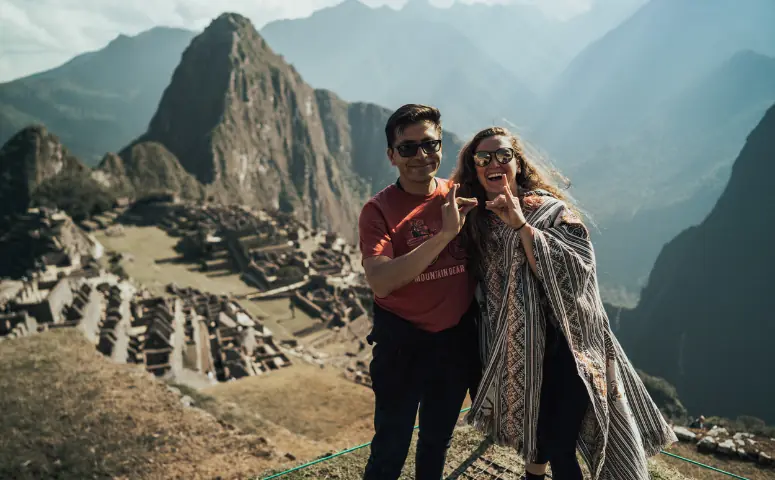
Altitude sickness presents a barrier when exploring Peru’s high-altitude treasures, which are a pleasure to discover. To make your trip safer and more pleasurable, keep in mind these important lessons:
- Gradual ascent and acclimatization are your best allies.
- Keep yourself hydrated, make smart food choices, and seek medical advice when necessary.
- Don’t push your limitations, and pay attention to your body.
If you consider all of these points, then you can discover our Best of Cusco in 4 days tour without any doubts and issues with altitude sickness.
4 Days: Best of Cusco
This amazing 4-day Machu Picchu tour will give you a unique and vivid experience of Cusco’s nature, local culture, history, architecture and the incredible New Wonder of the World.
Get ready for four unforgettable destinations in just four days: Sacred Valley, Machu Picchu, Rainbow Mountain and Lake Titicaca.
The expert guides will ensure you avoid the crowds and discover the best spots for stunning photography.
You can choose to travel in a small group (max eight people) or on a private tour. Another nice option is that you could book your own accommodation or let this be done by the Exploor team (2-5 star options to choose from).
Key Benefits of this Tour Option
- Explore the wonders of Machu Picchu with an expert guide who has led over 1000 tours.
- Embark on our intimate group excursions with 2-8 fellow adventurers (or opt for an exclusive private tour), ensuring early access to the sites and avoiding large crowds.
- Experience impeccable planning and execution as they are proud to be seasoned professionals in the field, recognized with a remarkable 95% Excellence rating on TripAdvisor.
Price: from USD 839 per person
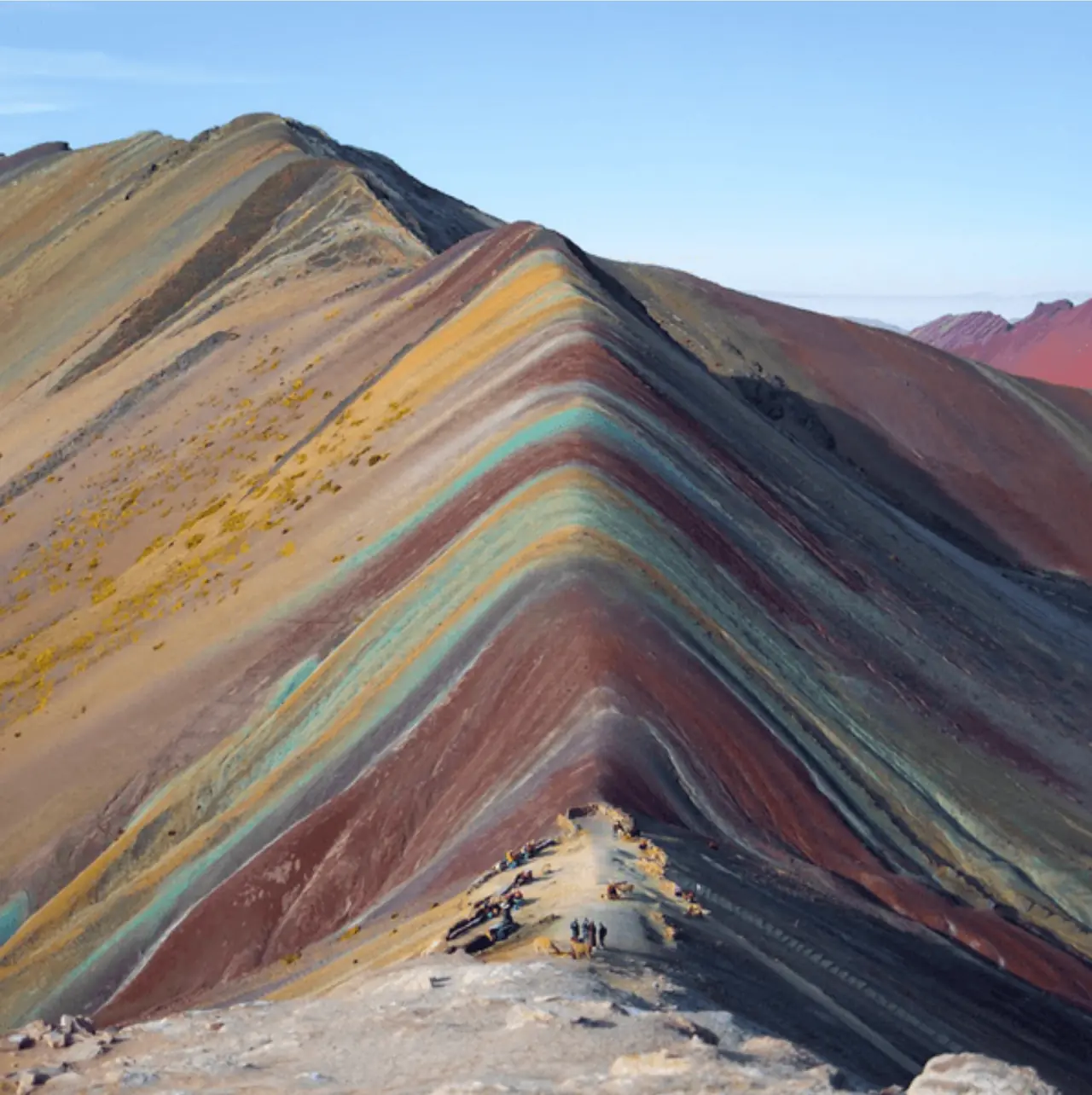
Cusco Itinerary
Day 1: Sacred Valley – Immerse Yourself in an Authentic Tour of the Valley’s Must-See Ruins
You’ll be picked you up at around 6:45 am to begin exploring the main sites of the Sacred Valley. You’ll visit places such as Moray, the Maras salt mines, Ollantaytambo, as well as stopping at a traditional chicheria to sample Inca beer and a local textile center.
At the end of this enriching tour, you’ll have two options: return to Cusco or continue on to Aguas Calientes, where you’ll visit Machu Picchu the next day.
Lunch is included, and you’ll stay overnight in either Cusco or Aguas Calientes.
Day 2: Machu Picchu – Discover this Wonder of the World with our Knowledgeable Guide
Embark on a fascinating 2 hour guided tour of the most important areas within the Machu Picchu ruins. Learn about its fascinating history and immerse yourself in Inca culture as your guide unveils remarkable structures that showcase ancient wisdom at its finest.
Once your exploration is complete, you will be transfered back to Cusco for another night.
Day 3: Rainbow Mountain – Experience Vinicunca Without the Crowds
Start early to enjoy some quiet moments at the top of the Andes! Marvel at the vibrant colors of Rainbow Mountain, with its breathtaking red landscapes, and meet llamas and alpacas along the way. Your small group (also the private tours) guarantees exclusivity by ensuring you are among the first to reach the summit.
Breakfast and lunch are included. Overnight in Cusco.
Day 4: Lake Humantay – Enjoy the Turquoise Lake Before the Big Groups Arrive
Situated at an altitude of 4200m, this hidden gem is surrounded by majestic glacier mountains that offer breathtaking views. After a 1.5-2 hour hike, you will be one of the lucky travelers to enjoy the tranquil beauty of the turquoise Humantay Lake with the snow-capped Mt. Humantay as a backdrop.
Breakfast and lunch are included. Overnight in Cusco.
Nice to have:
- Entrance, train and shuttle bus tickets for Machu Picchu are included.
- Trekking poles, first aid kit and oxygen for the treks included.
- Vegetarian and vegan options are available.
The most remarkable aspect of choosing Exploor is the triumph over the crowds. You make a point of getting up early to be among the first to explore your destinations. Given the current popularity of Peru, this approach truly transforms your experience. Plus, smaller groups give you more flexibility during your adventure.













